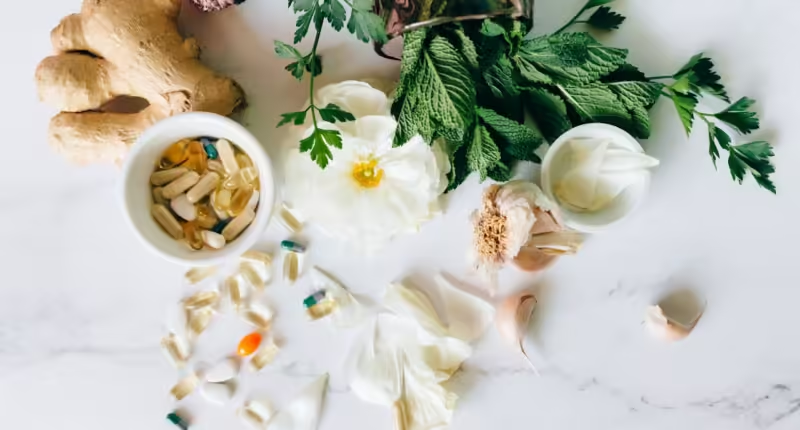Vaginal infections are a prevalent health concern among women, characterized by an imbalance in the vaginal environment that can lead to discomfort and other health issues. Common types of vaginal infections include bacterial vaginosis (BV), yeast infections, and trichomoniasis. Each of these infections has distinct causes and manifestations but often shares overlapping symptoms, which can complicate diagnosis and treatment.
Bacterial vaginosis is the most frequently occurring vaginal infection, caused by an overgrowth of anaerobic bacteria and a reduction in lactobacilli, which are the beneficial bacteria in the vagina. Symptoms of BV often include a fishy odor, gray or white discharge, and a feeling of irritation. Yeast infections, on the other hand, are typically caused by the fungus Candida. They are marked by intense itching, swelling, and thick, white discharge. Lastly, trichomoniasis is a sexually transmitted infection caused by the parasite Trichomonas vaginalis, resulting in itching, burning, redness, and sometimes a frothy, greenish discharge.
The prevalence of these infections highlights a significant health concern. Statistics indicate that nearly 30% of women between the ages of 14 to 49 have bacterial vaginosis at any given time, while about 75% of women will experience at least one yeast infection in their lifetime. Additionally, trichomoniasis affects an estimated 3.7 million individuals in the United States, with many remaining asymptomatic.
Symptoms of vaginal infections can vary, but common signs include unusual discharge, unpleasant odor, irritation, itching, and pain during urination or intercourse. Misdiagnosis or improper treatment of these infections can lead to chronic conditions, making it essential to understand the nature of each type and seek appropriate medical advice. This backdrop sets the stage for evaluating natural remedies, such as the use of ginger and garlic, in addressing vaginal infections.
Traditional Uses of Ginger and Garlic
Throughout history, ginger and garlic have played a significant role in traditional medicine across diverse cultures. These herbs have been valued not only for their culinary contributions but also for their potent therapeutic properties. In many ancient societies, ginger and garlic were staple remedies in the treatment of various ailments, particularly infections.
For instance, in Chinese traditional medicine, ginger is known for its warming properties and is frequently used to stimulate circulation and alleviate symptoms of the common cold. Similarly, garlic has been used for centuries in Ayurvedic medicine as a powerful antibacterial and antiviral agent. The belief in garlic’s ability to combat infections can be traced back to its sulfur compounds, which are thought to enhance its antimicrobial effects.
The ancient Egyptians also recognized the health benefits of these herbs. Ginger was employed to aid digestion and curb nausea, while garlic was prized for its role in boosting immune function and preventing illness. Furthermore, Greek physician Hippocrates, often regarded as the father of medicine, routinely prescribed garlic for its healing properties.
In Middle Eastern cultures, ginger and garlic are integral components of both cuisine and medicine. These herbs are incorporated into various dishes, where their health benefits can be imparted through daily consumption. Additionally, herbalists from these regions have utilized ginger to treat ailments such as gastrointestinal disturbances and inflammatory conditions.
The historical use of ginger and garlic across these cultures underscores their presumed health benefits, particularly in combating infections. Though not specifically mentioned in historical texts as a cure for vaginal infections, the extensive use of these herbs for treating a broad spectrum of ailments suggests their potential efficacy. Today’s scientific investigations continue to explore the mechanisms behind these traditional uses, bridging the gap between ancient wisdom and modern medical research.
Scientific Components of Ginger and Garlic
Ginger (Zingiber officinale) and garlic (Allium sativum) have been cherished for their medicinal properties for centuries. Central to their therapeutic usefulness are bioactive compounds such as gingerol in ginger and allicin in garlic. These compounds, along with others, contribute significantly to their antibacterial, antifungal, and anti-inflammatory effects, which are principal reasons these herbs are taken into consideration for treating various infections, including vaginal infections.
Ginger contains gingerols, shogaols, and paradols. Gingerol, the main bioactive component in fresh ginger, exhibits substantial antibacterial properties. It has been shown to inhibit the growth of several strains of bacteria, including those responsible for various infections. Gingerol’s antioxidant and anti-inflammatory properties also position it as a valuable agent in reducing inflammation associated with infections. This anti-inflammatory action can be especially beneficial in soothing irritation and inflammation prevalent in vaginal infections.
Garlic, on the other hand, is rich in sulfur-containing compounds, of which allicin is the most notable. Allicin is produced when garlic is crushed or chopped, activating its potent antibacterial capabilities. Numerous studies have demonstrated allicin’s effectiveness against a broad spectrum of microorganisms, including bacteria and fungi. This compound disrupts the microbial cell wall, leading to the elimination of the pathogen. Furthermore, allicin’s anti-inflammatory properties help mitigate symptoms like swelling and discomfort that often accompany infections.
Besides gingerol and allicin, ginger and garlic contain other supportive elements such as zingerone, a potent antioxidant found in ginger, and ajoene, an organosulfur compound found in garlic with notable antifungal properties. The combined effects of these compounds underscore the potential scientific basis behind using ginger and garlic to address vaginal infections. However, while these biological properties are promising, it is essential to approach their application with caution and seek professional medical advice before considering them as a treatment for vaginal infections.
Research on Ginger and Garlic for Treating Infections
The exploration of ginger and garlic as potential remedies for various types of infections, including vaginal infections, has gained considerable interest within the scientific community. Studies have demonstrated that both ginger and garlic possess significant antibacterial, antifungal, and anti-inflammatory properties, making them suitable candidates for natural therapeutic approaches.
Garlic, or Allium sativum, is well-documented for its antimicrobial activities. A prominent component, allicin, has been shown to inhibit the growth of a variety of pathogens. A study published in the *Journal of Antimicrobial Chemotherapy* highlighted its effectiveness against candida species, commonly associated with vaginal infections. The findings indicated that garlic extract could disrupt the fungal cell wall, leading to reduced fungal activity. However, these in vitro results require further clinical trials to establish effectiveness and safety in human subjects.
Similarly, ginger, or Zingiber officinale, contains active compounds such as gingerols and shogaols, which have displayed antimicrobial effects. Research reported in the *Journal of Medicinal Food* noted ginger’s capability to curtail the growth of bacteria implicated in vaginal infections, notably Escherichia coli and Staphylococcus aureus. While promising, these studies also underline the necessity for more comprehensive clinical trials to assess ginger’s efficacy and optimal dosing for treating vaginal infections in women.
Despite the encouraging preliminary results, limitations in existing research are evident. Many studies have been conducted in vitro or on animal models, which may not directly translate to the same levels of effectiveness in human populations. Additionally, dosages and forms of administration (such as raw, extract, or supplemented) need standardization to ensure consistency in outcomes. Researchers also emphasize the importance of considering potential side effects and interactions with other medications when integrating these natural remedies into a treatment regimen.
In conclusion, while ginger and garlic exhibit promising antimicrobial properties that could be beneficial in treating vaginal infections, further scientific research, including rigorously controlled human trials, is essential to validate their efficacy and safety.
Home Remedies and Recipes
Ginger and garlic have long been esteemed in various medicinal traditions for their potent health benefits, including their potential efficacy in managing vaginal infections. These natural ingredients are not only staples in culinary practices but also versatile when it comes to home remedies. Here are some common methods to harness their medicinal properties.
A popular approach is through the preparation of ginger tea. Start by boiling fresh ginger slices in water for about 10 minutes. Strain the liquid, add a teaspoon of honey, and consume while warm. Ginger tea is known for its anti-inflammatory and immune-boosting properties, which can aid in combating infections.
For garlic, a simple method is the usage of garlic oil or raw garlic. Crushing raw garlic releases allicin, a compound responsible for its antimicrobial effects. Adding finely chopped raw garlic to daily meals can enhance its intake. For topical application, garlic-infused oil can be prepared by soaking crushed garlic in olive oil for a few hours, then applied externally with caution, as undiluted garlic may cause skin irritation for some individuals.
Another potent remedy is combining ginger and garlic in a concoction. Create a ginger and garlic tonic by blending equal parts of ginger root and garlic cloves with honey and lemon. Consuming a tablespoon of this mixture twice daily can leverage the combined antibacterial properties of both ingredients.
For those considering dietary incorporation, both ginger and garlic can be added to a variety of dishes such as soups, stews, and salads. Freshly grated ginger can be a zesty addition to smoothies, while garlic can be a flavorful component in dressings and marinades.
While these home remedies offer promising potential, safety is paramount. It is essential to use fresh, organic ingredients and avoid overconsumption. Those with sensitive skin or allergies should perform a patch test before topical applications and consult with a healthcare provider, especially if underlying conditions or ongoing medications could interact with garlic and ginger.
Comparing Ginger and Garlic with Conventional Treatments
When comparing ginger and garlic to conventional medical treatments for vaginal infections, critical points of effectiveness, safety, and convenience emerge. Traditional treatments, such as antibiotics and antifungal medications, have long been the standard in combating infections like bacterial vaginosis and vaginal candidiasis. These conventional methods are generally effective and well-documented, often leading to quick relief from symptoms. However, there are downsides, including potential side effects such as gastrointestinal issues, allergic reactions, and the growing concern of antibiotic resistance.
On the other hand, ginger and garlic are natural remedies that have been praised for their potential antimicrobial properties. Both have shown promise in some studies for their ability to inhibit the growth of certain types of bacteria and fungi. Ginger, with its anti-inflammatory properties, and garlic, known for its compound allicin, offer a holistic approach that may appeal to those seeking alternative options. These herbs are also usually well-tolerated, with fewer side effects compared to pharmaceutical interventions. Nonetheless, the effectiveness of ginger and garlic may vary from person to person and lacks the robust clinical trial evidence that supports conventional treatments.
In terms of convenience, conventional treatments typically require a prescription and medical supervision, which ensures proper diagnosis and management but may also involve doctor visits and associated costs. Meanwhile, ginger and garlic are accessible and easy to use, often found in grocery stores and natural food markets. This accessibility, combined with their low cost, makes them attractive options for self-care. However, self-medication without professional guidance can lead to misdiagnosis and inappropriate treatment, potentially exacerbating the condition.
The choice between ginger and garlic versus conventional treatments ultimately depends on individual circumstances, including the severity of the infection and patient preference. While natural remedies like ginger and garlic offer promising benefits, it is crucial to approach vaginal infections under medical supervision to ensure safe and effective treatment.
Potential Risks and Side Effects
The use of ginger and garlic as natural remedies for various ailments, including vaginal infections, is widely popular. However, it is important to highlight potential risks and side effects associated with their use, especially when consumed in large quantities or over extended periods. Understanding these risks is crucial to ensure safe and effective application in healthcare practices.
Firstly, allergic reactions are a significant concern. Both ginger and garlic can cause adverse reactions in some individuals. Symptoms of an allergic reaction may include rash, itching, swelling, dizziness, and difficulty breathing. Individuals with known allergies to these substances should avoid their use. Additionally, consuming these herbs in untested or unconventional ways, such as inserting them directly into the vaginal area, could lead to severe irritation or infections.
Interactions with other medications present another notable risk. Garlic, in particular, is known to interact with anticoagulant medications, such as warfarin, potentially increasing the risk of bleeding. Ginger may also affect blood clotting and should be used with caution by individuals on blood-thinning medications. It is vital to consult with a healthcare provider before integrating significant amounts of these herbs into the diet, particularly for individuals on prescribed medications.
Moreover, individuals with certain health conditions should exercise caution. For example, people with gastrointestinal disorders such as gastroesophageal reflux disease (GERD) might experience worsened symptoms due to ginger’s strong flavor and acidity. Similarly, garlic can exacerbate conditions like irritable bowel syndrome (IBS) due to its fermentable nature, potentially leading to increased discomfort and bloating.
The potential benefits of using ginger and garlic to treat vaginal infections are accompanied by considerations of their appropriate and safe usage. Recognizing the potential risks and side effects ensures informed decision-making and helps mitigate adverse outcomes, supporting a balanced approach to natural remedies. Consulting with healthcare professionals before commencing any new treatment regimen is always advisable.
Conclusion and Recommendations
Throughout this blog post, we have explored the potential benefits and limitations of using ginger and garlic as alternative treatments for vaginal infections in women. Both ginger and garlic have been recognized for their antimicrobial properties and potential health benefits. However, while some studies suggest these natural remedies may provide relief or serve as supplementary treatments for vaginal infections, their efficacy is not universally established within the scientific community.
It is crucial to address the need for caution and balance when considering traditional remedies for health conditions. Ginger and garlic, though promising, should not be solely relied upon to treat vaginal infections. The variability in individual responses to these natural treatments underscores the importance of personalized medical advice. Consulting with healthcare professionals remains paramount to ensuring effective treatment and avoiding complications that might arise from untreated or improperly managed infections.
Moreover, modern medical treatments for vaginal infections have been tested and proven to be effective through rigorous clinical trials. These treatments often provide quicker and more reliable relief compared to natural alternatives. However, the integration of ginger and garlic into one’s diet could potentially offer supportive benefits when used in conjunction with conventional medical advice and treatments.
As a practical recommendation, women experiencing symptoms of vaginal infections should seek professional medical evaluation to determine the appropriate course of action. If interested in incorporating natural remedies like ginger and garlic, discussing their use with a healthcare provider is advisable to ensure safety and compatibility with prescribed treatments. A balanced approach, combining evidence-based medical practices with informed use of natural remedies, can optimize health outcomes and ensure comprehensive care.






